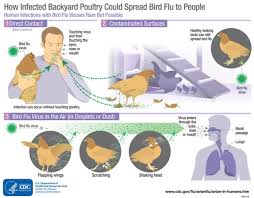In the quest to curb influenza, new research suggests the key might be right under our noses—or more precisely, inside them. Groundbreaking studies have meticulously mapped the nasal immune response during influenza, unveiling critical insights that could pave the way for more effective nasal vaccines.
The nose often serves as the initial entry point for respiratory infections, where viruses like influenza set up and begin replicating. Despite its pivotal role, the immune response within the nasal cavity has remained relatively unexplored.
Dr. José Ordovás-Montañés, a researcher at Boston Children’s Hospital, highlighted this gap in research, noting that traditional studies have focused more on the lungs and other areas. His lab first tackled this underfunded aspect during the COVID-19 pandemic, discovering that individuals with severe COVID-19 had compromised antiviral responses in their nasal passages.
Building on this foundation, Dr. Samuel Kazer and his team have now expanded their research to explore influenza in greater detail. Unlike previous studies that only provided a snapshot of nasal swab data, this new study offers a dynamic, comprehensive view by tracking the immune response in the nasal mucosa throughout the infection period.
Creating a Cellular Atlas
The research involved sequencing the RNA of thousands of individual cells in the nasal mucosa, generating over 150,000 data points over two weeks. This extensive mapping revealed 127 different cell types and subtypes, including epithelial cells, various immune cells, connective tissue cells, and even smell-related neurons.
The study documented the dynamic changes in these cells throughout the infection. For instance, neutrophils, which are the first responders to infection, appeared early but were replaced once the virus was cleared. Tissue-resident memory T cells (TRM cells), which help retain infection memory, were observed around day 14 and persisted through subsequent infections, alongside plasmablasts that evolved into antibody-producing plasma cells.
Uncovering New Cell Types
A particularly intriguing discovery was the identification of a previously unknown group of cells, termed Krt13+ nasal immune-interacting floor epithelial cells (KNIIFE cells). These cells emerged one to two weeks after infection and are located along the bottom of the nasal cavity. Despite initial skepticism about their significance, their unique characteristics suggest they play a crucial role in maintaining immune memory.
Dr. Kazer noted that KNIIFE cells express numerous genes linked to immune function, which are atypical for epithelial cells. Their expansion post-infection and their coexistence with TRM cells might be essential for a swift and coordinated immune response during subsequent infections.
Future Directions and Potential Impact
The research team is now investigating the role of KNIIFE cells further and aims to correlate these findings with data from human nasal swabs and other viral infections observed at Boston Children’s Hospital. The ultimate goal is to develop a long-lasting nasal vaccine that could enhance the nasal cavity’s ability to “remember” the influenza virus, thereby reducing disease spread.
Dr. Kazer emphasizes the importance of understanding how immune memory functions within barrier tissues like the nasal mucosa. This fundamental knowledge could lead to significant advancements in vaccine development and public health.
For more details, see: Samuel W. Kazer et al, “Primary nasal influenza infection rewires tissue-scale memory response dynamics,” Immunity (2024). DOI: 10.1016/j.immuni.2024.06.005.












